Ever jumped into a freezing shower on a winter morning or waited forever for hot water while your energy bills climbed? Choosing the right hot water system for your Aussie home has never been more important, with rising costs and environmental concerns. Whether you’re building, replacing, or upgrading, this 2025 guide covers everything from heat pump technology to traditional systems, with reviews, cost comparisons, sizing tips, and practical advice to help you find the perfect solution.
Understanding Different Hot Water System Types Available in Australia
Australian homes have several hot water options, each with distinct benefits. Electric storage systems are affordable and easy to install, heating water in an insulated tank. Gas systems, whether storage or instantaneous, provide reliable performance where natural gas is available. Solar systems harness Australia’s sunshine to cut running costs, usually backed by gas or electric boosters for cloudy days. Meanwhile, heat pump systems lead in efficiency, using ambient air—like a reverse-cycle air conditioner—to heat your water.
Key factors when choosing include:
- Initial purchase and installation costs
- Ongoing running expenses
- Available space and installation requirements
- Environmental impact
- Your household’s hot water usage patterns
- Local climate conditions

What Is the Best Heat Pump for Australian Conditions?
Heat pump technology is a great fit for Australian conditions, efficiently converting ambient air into hot water—even in cooler regions like Tasmania down to -10°C. Coastal homes benefit from corrosion-resistant models, while inland areas can prioritise efficiency. Leading brands like Sanden, iStore, and Reclaim Energy design their systems for local climates with features like advanced defrost cycles, weather-resistant casings, and optimised performance. For best results, consider your location, airflow, and available space.
Key tips:
- Choose corrosion-resistant models for coastal areas
- Prioritise efficiency ratings inland
- Install in north-facing spots with good airflow
- Check for council rebates to cut costs
- Pick quiet models to keep neighbours happy
Comprehensive Heat Pump Hot Water Reviews: Top Models for 2025
Let’s examine the standout performers in today’s market. The Sanden Eco Plus continues to impress with its whisper-quiet operation and exceptional efficiency, achieving a coefficient of performance (COP) above 5 in ideal conditions. Its CO2 refrigerant makes it environmentally friendly, and the split system design offers flexible installation options.
Customer feedback highlights these common themes:
- Dramatic reduction in electricity bills
- Reliable performance across various weather conditions
- Quiet operation compared to older models
- Excellent after-sales support from established heat pump companies
- Smart features that optimise running times
Cost Analysis: Initial Investment vs Long-Term Savings
Heat pump hot water systems cost more upfront ($3,000–$5,000 installed vs. $1,000–$2,000 for electric storage) but deliver major long-term savings. A family of four might spend $800–$1,200 yearly on electric hot water, but just $200–$400 with a heat pump—saving $6,000–$8,000 over a decade, plus rebates sweeten the deal. Solar systems cost $3,000–$7,000 with longer payback but near-zero running costs, and pairing solar panels with a heat pump creates an ultra-efficient (though pricier at $8,000–$12,000) setup. Gas sits in the middle but faces rising prices and possible phase-outs.
Key takeaways:
- Heat pumps: Higher upfront, big long-term savings
- Electric storage: Cheapest to buy, most expensive to run
- Solar: Near-zero running costs in sunny areas, higher initial outlay
- Hybrid (solar + heat pump): Ultra-efficient but costly
- Gas: Mid-range option, future uncertainty with rising gas costs
Sizing Your Hot Water System: Getting It Right the First Time
Proper sizing prevents both cold showers and wasted energy. Start by calculating your household’s peak hour demand – typically morning when everyone’s showering. A general rule suggests 50L per person daily, but actual usage varies significantly based on lifestyle factors.
Consider these usage estimates:
- Shower: 25L (water-efficient) to 50L (standard)
- Bath: 80-150L
- Dishwasher: 20-30L per load
- Washing machine: 50-120L per load
- Kitchen and bathroom taps: 15-20L daily
For storage systems, add 25% buffer to your calculated daily usage. A four-person household typically needs 250-315L capacity. However, heat pumps recover more slowly than electric elements, so sizing up ensures adequate supply during high-demand periods.
Installation Considerations for Australian Homes
Professional installation ensures optimal performance and compliance with Australian standards. Heat pump installations require adequate space – typically 1m clearance around the unit for airflow. North-facing positions maximise efficiency by capturing winter sun whilst avoiding extreme summer heat.
Consider these practical factors:
- Noise restrictions in your council area
- Distance from bedrooms and living areas
- Accessibility for maintenance
- Protection from coastal salt spray
- Adequate drainage for condensation
Environmental Impact and Sustainability
Australians are increasingly factoring in sustainability when choosing hot water systems. Heat pumps cut emissions by up to 70% compared to electric storage, while solar systems offer near-zero operational emissions and decades of clean energy. Combining solar with heat pumps delivers the lowest-impact solution. Electric storage ranks worst (especially in coal-reliant states), and gas sits mid-range but still uses fossil fuels. As the grid shifts to renewables, heat pumps and electric options will only get cleaner. Durability also matters—quality systems lasting 15–20 years spread their environmental footprint more effectively.
Eco takeaways:
- Heat pumps: 70% fewer emissions, highly efficient
- Solar: Near-zero emissions, panels last 20–25 years
- Hybrid (solar + heat pump): Best sustainability choice
- Electric storage: Worst option, coal-dependent
- Gas: Lower than electric, but still fossil-fuel reliant
- Durability: Longer system life = lower lifetime impact
Maintenance and Longevity
Regular maintenance extends system life and maintains efficiency. Heat pumps need annual checks including:
- Cleaning air filters and evaporator coils
- Checking refrigerant pressures
- Testing safety valves
- Inspecting anodes in storage tanks
- Verifying electrical connections
Most manufacturers recommend professional servicing every 12-24 months. DIY maintenance between services includes keeping outdoor units clear of debris and checking for unusual noises or leaks.
Storage tank systems require anode replacement every 3-5 years, preventing corrosion that shortens tank life. Solar systems need panel cleaning and pump checks. Instantaneous units benefit from periodic flushing to remove mineral buildup.
Special Applications: Beyond Standard Household Use
Hot water systems go well beyond everyday household use, with heat pump technology excelling in diverse applications. Pool heat pumps efficiently extend swimming seasons, while hydronic systems pair with underfloor heating to deliver both hot water and whole-home comfort from one unit. In commercial settings like guesthouses or granny flats, multiple small units can outperform a single large system, offering flexibility and redundancy with smart controls for zone management. Rural and off-grid properties also benefit—heat pumps work seamlessly with solar, batteries, or even generators thanks to their low power needs.
Key uses:
- Pools: Efficient heating for longer swim seasons
- Hydronic heating: Underfloor + hot water from one system
- Commercial: Multiple small units for redundancy and efficiency
- Rural/off-grid: Combine with solar and batteries for independence
Making Your Decision: Which System Suits Your Home Best?
Pulling everything together, your ideal system depends on specific circumstances. For most Australian homes, heat pumps offer the best combination of efficiency, running costs, and environmental performance. They suit our climate perfectly and deliver consistent savings.
Consider heat pumps if you:
- Want to reduce energy bills significantly
- Have adequate outdoor installation space
- Value environmental sustainability
- Plan to stay in your home long-term
Solar hot water makes sense for sun-drenched locations with suitable roof space. Instantaneous gas units work well for space-constrained properties with existing gas connections. Traditional electric systems only suit situations demanding minimal upfront costs.
Conclusion: Your Next Steps Towards Better Hot Water
In 2025, Australians can choose from efficient heat pumps, solar, gas, and electric systems, with sustainable options leading the way. The right system depends on your household needs, budget, and long-term savings. Assess your current setup, explore rebates, compare installers, and prioritise quality and correct sizing for years of comfort, lower bills, and a smaller environmental footprint.




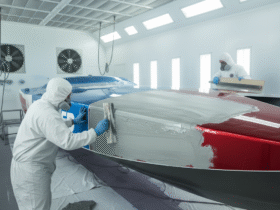
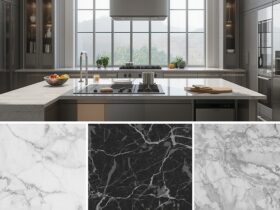

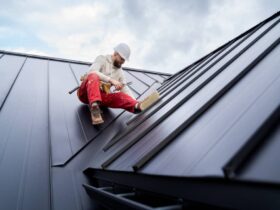
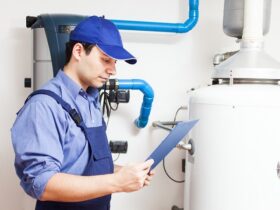
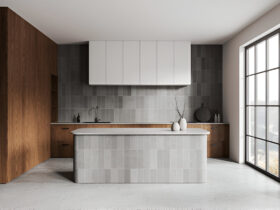
Leave a Review